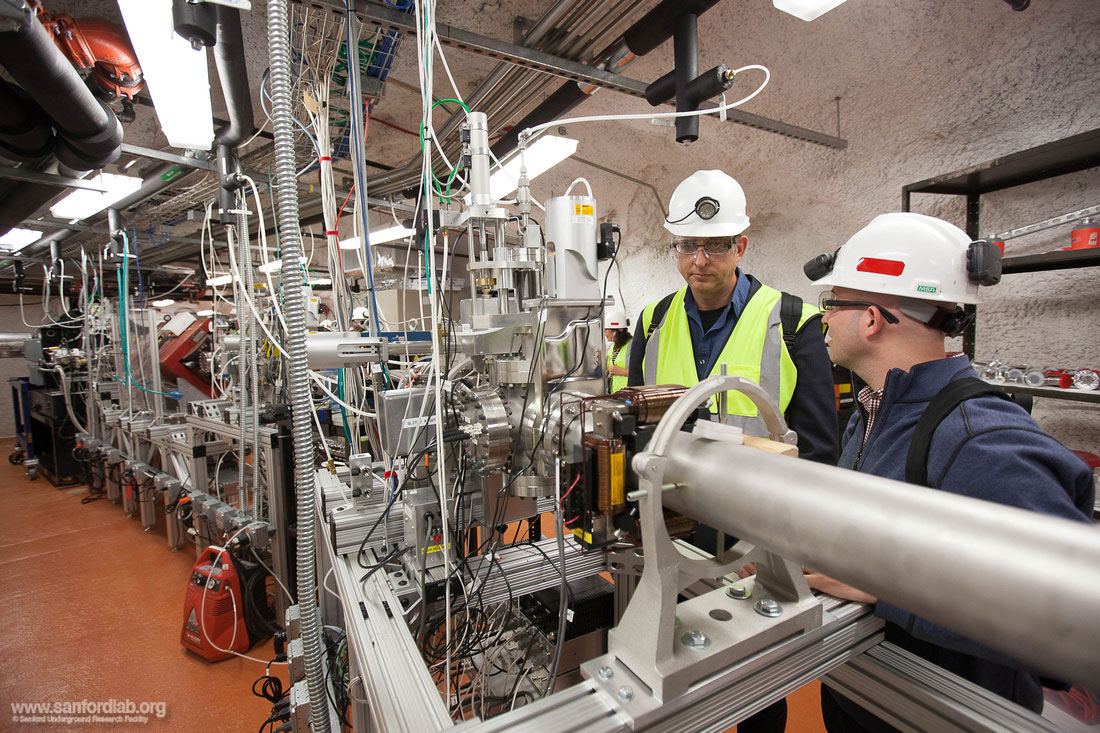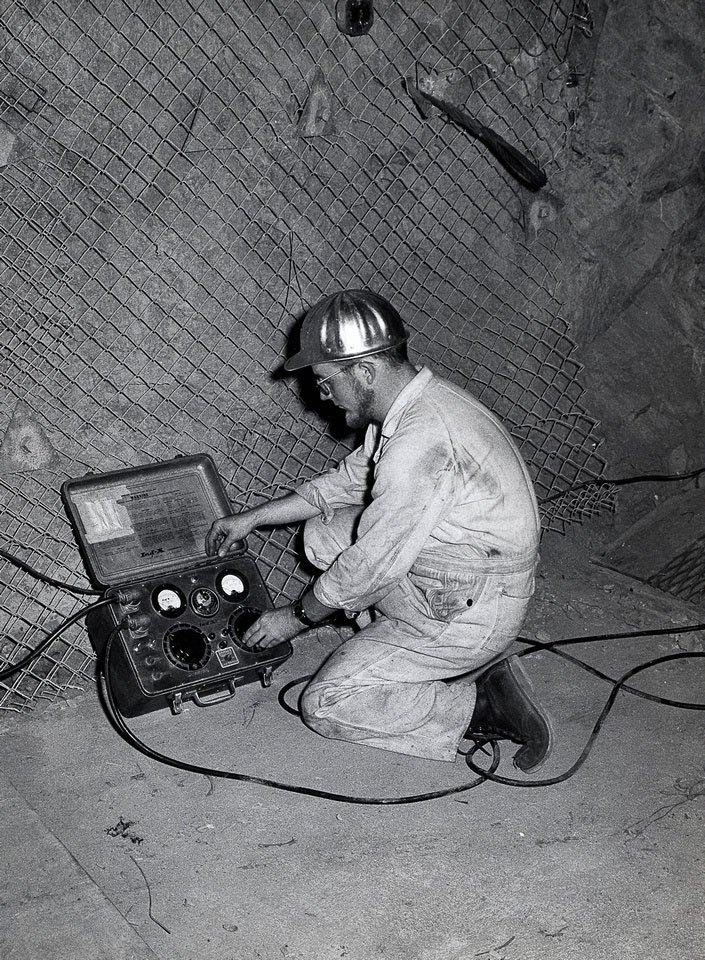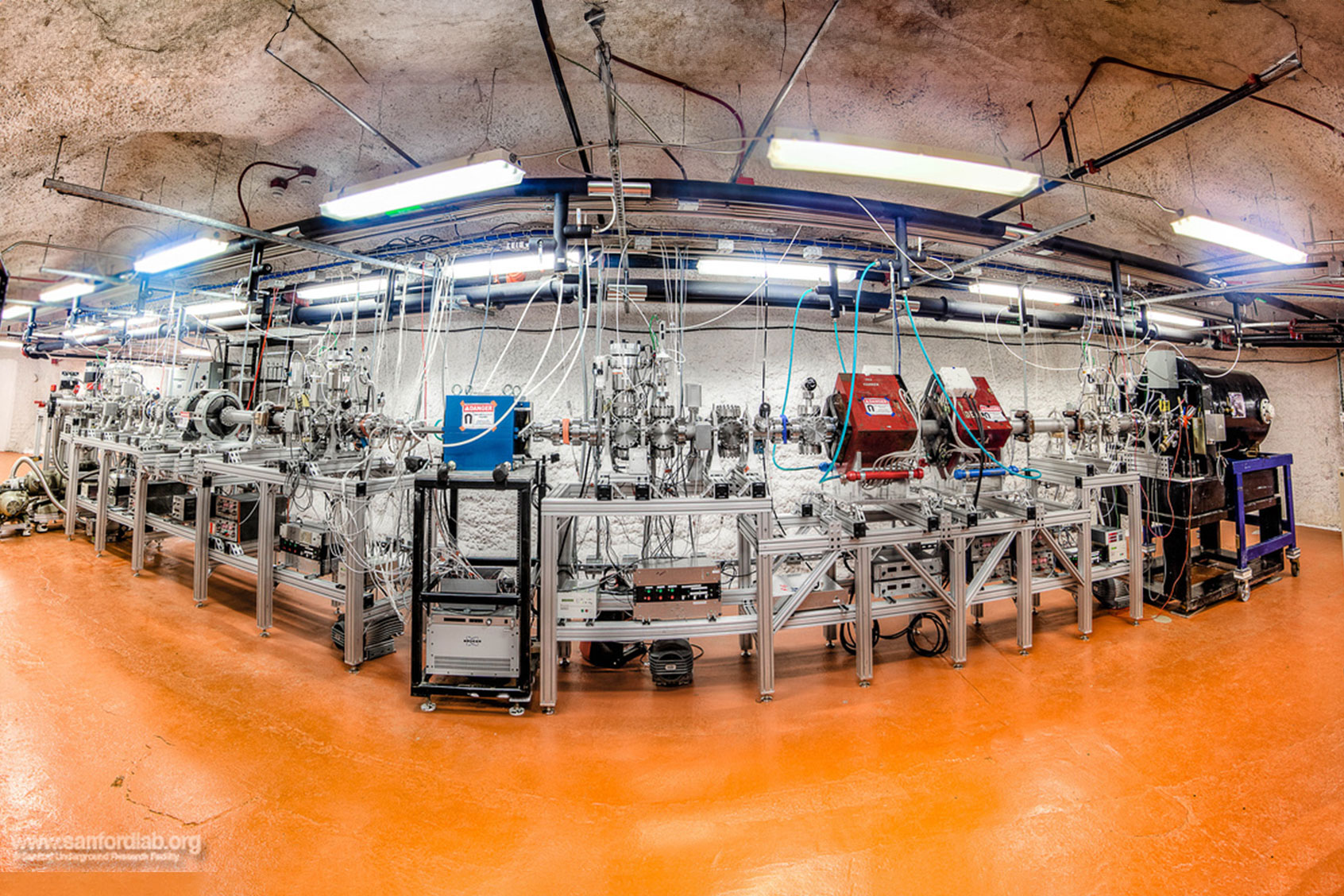4,850 feet beneath the Black Hills of South Dakota, there’s an underground particle accelerator in a former gold mine. Here, a motorcycle-riding nuclear astrophysicist named Mark Hanhardt thinks about the poetry of Alfred Tennyson while recreating the quantum alchemy of a 13-billion-year-old star.
Pictures from the James Webb Space Telescope contain a glint of what its eye can not yet see, an ancient spectrum of light that Hanhardt peers into with his team. Here, he maps the primordial chemical lineage of the universe back to the Big Bang. Here, with a poem, his doctoral thesis begins:
“Flower in the crannied wall,
I pluck you out of the crannies,
I hold you here, root and all, in my hand,
Little flower — but if I could understand
What you are, root and all, and all in all,
I should know what God and man is.”
If any poem could describe the scientific research being conducted with the Compact Accelerator System for Performing Astrophysical Research (CASPAR) in South Dakota, you’d be hard pressed to find a more perfect fit than the Romantic-era metaphysics of Tennyson’s “Flower in the Crannied Wall.”
“CASPAR appeals to me, specifically because of the poetry of it,” Hanhardt said in a release from the Sanford Underground Research Facility where CASPAR is housed.
Scientists have had a love affair with Tennyson, known as “the poet of science”, since 19th century naturalist William North Rice was reconciling his love of geology with his Methodist faith. Even Joseph Norman Lockyear, founder of the academic journal Nature, was enchanted by Tennyson’s simultaneous hunger for study and embrace of the unknowable. Hanhardt’s chosen verse is short, concise — packing all the star-struck wonder of the universe into just six lines about a flower, connecting the infinite to the minute.
And that’s what CASPAR is all about for the scientists who work with it.
“With CASPAR, physicists are literally tracing our chemical lineage.”
“The idea that understanding these tiny reactions on the smallest quantum scale gives us the ability to understand the universe on the grandest scale possible is amazing. It helps us recognize and appreciate how profound the images coming back from James Webb Space Telescope really are,” Hanhardt said.
 Nearly a mile beneath the Black Hills of South Dakota at the Sanford Underground Research Facility, a small particle accelerator called CASPAR is premiered by scientists at the machine's official ribbon-cutting. (Sanford Underground Research Facility)
Nearly a mile beneath the Black Hills of South Dakota at the Sanford Underground Research Facility, a small particle accelerator called CASPAR is premiered by scientists at the machine's official ribbon-cutting. (Sanford Underground Research Facility)
And the telescope, for all its power, needs the help. What scientists like Hanhardt need to find out is beyond the Webb’s reach. What was going on inside those 400-million-year-old stars that appear in the Webb’s pictures? What were the main elements that made them up, and what does that tell us about how the universe — and all matter — evolved into its current state after the Big Bang?
“With CASPAR, physicists are literally tracing our chemical lineage,” he added. “The atoms that make up you and me were forged inside the heart of the stars. And we're studying how that happens. CASPAR is helping James Webb Space Telescope tell the story of how we got from there to here.”
Proton in a crannied star
That path is winding and subatomic. Early stars burned out fast — made of only helium and hydrogen — but when they exploded they scattered entirely new elements out into space. Because that process was so much different for early stars than supernovas that can create elements today, we don’t know exactly how those early elements (thus, new atoms) were even formed.
Want more health and science stories in your inbox? Subscribe to Salon's weekly newsletter Lab Notes.
But South Dakota Mines physics professor Frank Streider is working on it. He said the key to charting the known universe’s path through time is in untangling a complex process known as stellar nucleosynthesis, and then deciphering the subatomic-level reactions inside that process. CASPAR is making this possible by taking the ancient light spectrums captured in Webb photos, and then analyzing their signatures to figure out exactly which elements were producing that light in combusting stars.
“A comprehensive answer to this discrepancy remains elusive to date.”
“Stars of significantly greater mass than our Sun usually serve as the cosmic cauldrons, actively ‘polluting’ the universe with heavier elements,” Strieder, one of the principal investigators leading CASPAR, said in the release. “As soon as you understand the full reaction chains that happen inside the stars, and have all the parameters, you can exactly predict how the star evolves and how long it lives.”
 A researcher calibrates underground equipment during the famous Homestake experiment, which measured solar neutrinos from 1970 to 1994 in the same subterranean location where the CASPAR particle accelerator is used by physicists today. (Anna Davis / Sanford Underground Research Facility)
A researcher calibrates underground equipment during the famous Homestake experiment, which measured solar neutrinos from 1970 to 1994 in the same subterranean location where the CASPAR particle accelerator is used by physicists today. (Anna Davis / Sanford Underground Research Facility)
One of those heavier elements is lithium, the third element to be formed in the universe. The fourth element to be formed was beryllium. Here’s where things get weird. Lithium was forged inside stars when atomic reactions transformed a helium atom with one extra proton and neutron. Then, as far as we understand, lithium was somehow transformed into beryllium — but some lithium building blocks can be so unstable by themselves that they seemingly fall apart way too quickly for beryllium to emerge.
At that point, the metaphorical bridge of elemental production gets broken. And, since beryllium clearly exists somehow, scientists are squinting into CASPAR to find out how the chain of elemental production managed to continue across the gap in this broken bridge.
“A comprehensive answer to this discrepancy remains elusive to date,” Strieder said, describing how the amount of lithium we expect to see in early stars is different than the amount we’re actually seeing.
Strieder said the gap isn’t just between two main elements like lithium and beryllium, but also appears between multiple types of a single element — when going from lithium-5 to lithium-6, for example, by adding one additional proton. You need both a proton and neutron to keep the balance. But when a balanced lithium atom gets an extra proton and turns into lithium-5, it’s half-life in total seconds equals 10 to the negative-20th power. That’s one one-hundred-quintillionth of a second.
“This is a prominent gap … it’s because there are no mass five stable nuclei,” he said, adding that lithium-8 (the one that comes before beryllium) has a similar problem. “So, you can produce a small amount of lithium 6 and lithium 7, but to go higher is a challenge.”
To see the stars underground
Strieder said that with the power-combo of CASPAR and the Webb telescope, physicists like he and Hanhardt are plotting out research for the future which could finally fill these gaps in our knowledge about the earliest moments in the existence of the universe.
When a balanced lithium atom gets an extra proton and turns into lithium-5, it’s half-life in total seconds equals 10 to the negative-20th power. That’s one one-hundred-quintillionth of a second.
Like atomic building blocks, one iteration of technology sits atop the next at the Sanford Lab. The former Homestake Gold Mine that now houses the lab was, for many years, the busiest mine in the state, delving some 8,000 feet underground, where whitetail deer roam through the valleys now and otter families are spotted by researchers in waterways of the Black Hills.
From 1969 to 1994, the Homestake mine was the site of some of the earliest solar neutrino experiments in history. Called the Homestake experiment, chemist Ray Davis began his work in 1965 in the mine aiming to count neutrinos from the stars with a 100,000-gallon tank of dry cleaning fluid and a wild theory: that when the neutrinos hit the chlorine in the dry-cleaning fluid, they would turn into argon atoms. He was right — or at right enough to win a share of the Nobel Prize for Physics in 2002.
We need your help to stay independent
“To my surprise, a whole new field of neutrino physics has developed in directions I never imagined in the Homestake days,” Davis wrote that year.
Just as Davis was winning his Nobel Prize in 2002, something else happened — the Homestake mine closed down. Without continuous pump operations, it didn’t take long for the waters to begin rising in the old mines.
It took scientists and advocates years of sweat and governmental paper-chasing to secure the site — a premium location for carefully controlled particle experiments — and to turn the mine into the gleaming 12-mile sprawl of underground research facilities and state-of-the-art tech that it is today. Its experiments have injected hundreds of millions of dollars into South Dakota’s economy and household incomes. Its work has attracted partnerships with countries and organizations around the world.
Strieder and Hanhardt are just two of the lab’s roughly 120 staff members, 50% of which the lab says are former Homestake Mining Company workers. Their depth of institutional experience in navigating the old underground mining drifts now forms the foundation of the new scientific knowledge that the Sanford Lab — from the belly of the earth, is culling from the stars.
Read more
about physics and space

